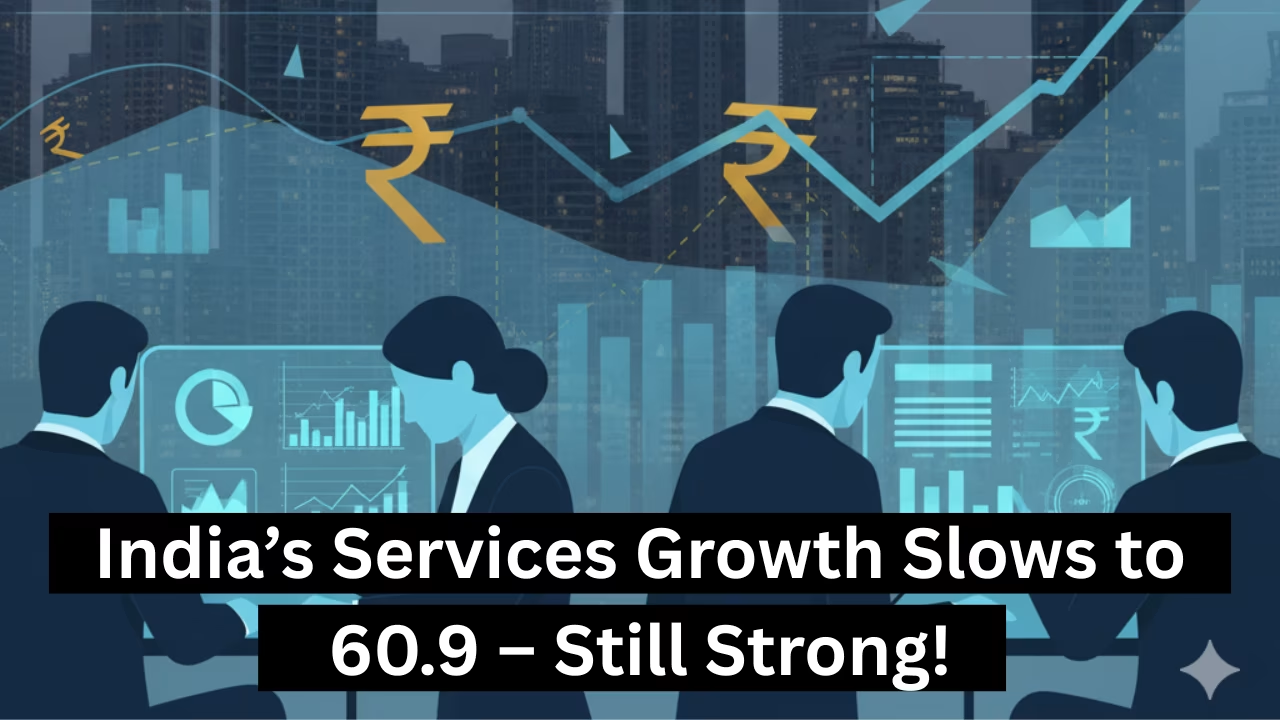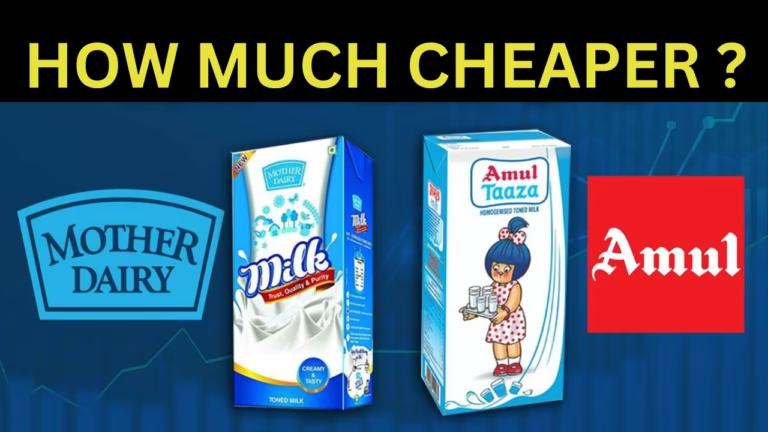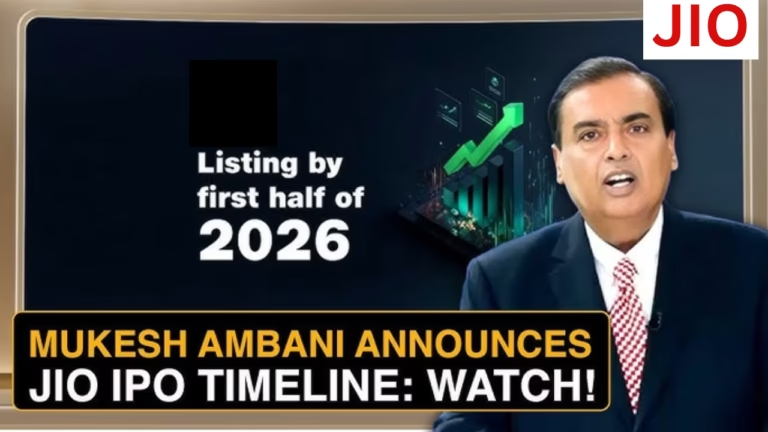
India’s services growth eases to 60.9 in September as weak international demand impacts expansion.
Published on: October 6, 2025 at 15:17

In September 2025, India’s services sector continued to expand strongly—but at a more moderate pace than in August. The HSBC / S&P Global Services PMI dropped to 60.9 from 62.9, pointing to easing momentum amid weakness in international demand.
What lies behind this cooldown? Will this moderation turn into a sustained slowdown? In this blog, we will unpack the key drivers, compare with the manufacturing sector, assess risks and opportunities, and explore what this means for India’s economic trajectory.
Let’s dive in.
What the Numbers Are Saying: Dissecting the September PMI
1.1. The Broad Picture: Still Expansion, Just Slower
Although the PMI reading of 60.9 is lower than August’s 62.9, it remains far above the neutral 50 threshold—meaning the services sector is still in expansion mode.
Composite PMI (services + manufacturing) also cooled (to ~61.0) in September, indicating a general softening across sectors.
1.2. Driving Factors: What Slowed the Acceleration?
-
Weak International Demand / Export Orders: The sub-index tracking foreign demand grew at its slowest pace in months, with firms citing stiff global competition and price pressures.
-
Strong Domestic Demand Continues: While exports cooled, domestic orders remained healthy, cushioning the overall impact.
-
Cost Pressure & Price Pass-through Moderation: Input cost inflation eased somewhat, and firms were less aggressive in passing costs to customers.
-
Employment Growth Held Back: Companies remained cautious about hiring, with employment gains modest relative to output growth.
1.3. Historic Context: From August’s Peak to September Cooling
August 2025 had seen a surge to 62.9—the highest in 15 years—propelled by robust demand and export strength. The September dip appears to be a reversion toward more sustainable rates after an unusually strong month.
This is not uncommon for cyclical data: after an exceptional spike, some pullback is expected.
Also Read| Reliance Jio IPO by 2026: Mukesh Ambani’s Big Bet on AI, Global Expansion & Digital India
Comparing Services with Manufacturing & The Broader Economy
2.1. Manufacturing Is Slowing Faster
In September 2025, India’s manufacturing PMI fell to 57.7 (from 59.3 in August). Like services, manufacturing is still in expansion territory, but the deceleration is more pronounced.
Rising input costs (e.g., raw materials, energy) and weaker new orders contributed to the slowdown.
2.2. Spillover Effects & Interlinkages
Because manufacturing often feeds into services (e.g. logistics, supply chain, after-sales), a slowdown in factories could eventually dampen demand for services.
Moreover, composite PMI deceleration suggests that the private sector—both goods and services—is facing headwinds.
2.3. Macroeconomic Implications
-
Growth Outlook: India’s overall GDP growth may moderate, though still likely positive owing to domestic demand resilience.
-
Monetary Policy: The RBI will be watching inflation closely. With cost pressures easing somewhat, there may be room for accommodative guidance—though global uncertainties may constrain bold moves.
-
Investor Sentiment: Markets may react sensitively to further softening in PMIs, especially if tied to export weakness or global headwinds.
Risks, Opportunities & What to Watch Going Forward

3.1. Key Risks That Could Derail Momentum
-
Prolonged Export Weakness: If global demand doesn’t pick up, firms relying on international clients may see deeper contraction.
-
Rising Global Inflation / Interest Rates: Higher input costs or tighter global monetary conditions could squeeze margins.
-
Geopolitical / Trade Headwinds: Tariffs, supply chain disruptions, or geopolitical tensions may add strain to exporting service sectors.
-
Domestically, Demand Constraints: If consumer sentiment or investment slows, even the domestic buffer may weaken.
3.2. Opportunities Amid the Cooling
-
Focus on High-value Services: IT, fintech, healthcare, digital services are less reliant on heavy export cycles and more insulated.
-
Productivity & Efficiency Measures: Firms might leverage this period to invest in automation, process upgrades, cost control.
-
Policy Tailwinds: If the government steps in with stimulus, tax incentives, or export support, that could sustain momentum.
3.3. Indicators to Watch in the Next Few Months
-
October / November PMI readings (especially services)
-
Export order sub-index trends
-
Input & output price inflation components
-
Employment / hiring sub-index
-
Composite GDP growth forecasts by RBI / think tanks
A sustained decline in PMIs below, say, the mid-50s would signal a more serious softening; staying in the 55–65 band suggests moderating expansion.
Also Read| Trump Refutes Plans to “Destroy” Musk’s Companies: “I Want Elon & All Businesses to Thrive”
Conclusion & Personal Take
From where I stand, September’s data tells a story of a powerful machinery easing its acceleration, not braking hard. The services sector in India remains fundamentally strong, buoyed by domestic demand, but international reliance makes it vulnerable to external shifts.
If I were to place a bet: India is likely to see moderate growth in Q4 2025, with the pace governed heavily by how global demand evolves and how aggressively domestic stimulus or reforms are deployed.
For you (as a blogger, policy watcher, investor, or business leader), my advice is:
-
Keep an eye on export order trends — this is the lever that may decide whether the moderation becomes a slide.
-
Pay attention to price & input cost data — margin pressure can squeeze growth even if orders hold.
-
Watch government / RBI announcements — even small stimulus, tax cuts, or reforms could tip the balance.
-
In your content or analysis, always back up claims with data, show your reasoning, and offer your unique insight. That’s what helps you stand out in a sea of macro commentary.





